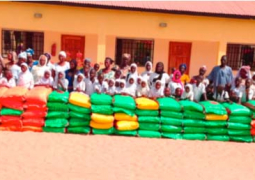Justice Emmanuel Ahmadi of the Brikama High Court yesterday admitted the document the prosecution sought to tender as an exhibit, in the case involving former senior Agriculture ministry officials following a ruling he delivered to that effect.
The ruling was preceded by the application of the prosecution to tender the document, which was objected to by the defence.
The accused persons are Alhagie Bakary Trawally, former permanent secretary, Dr Amadou Sowe, former permanent secretary, Seedy Jarju, former permanent secretary, Kekoi Kuyateh former deputy permanent secretary, all at the ministry of Agriculture in Banjul, Dr Mustapha Ceesay, former deputy director-general at NARI, Momodou Mbye Jabang, a former program coordinator, Modou Lamin Ceesay a businessman, Awa Sey Ceesay, a former supplies officer at the ministry, and one Yusupha Jawara.
They are charged with five counts of economic crime, three counts of uttering false documents and two counts of negligence of official duties.
In his ruling, Justice Ahmadi stated, among others, that though the witness was not the author of the document, he saw it in the file at the Ministry of Agriculture.
He consequently overruled the defence objection, and admitted the document as an exhibit.
Under cross-examination, Alfu Marong told the court that he is an agronomist and a scientist who specialized in plant breeding at university.
He added that he has knowledge in rice cultivation, and that rice is categorized as a cereal, whereas groundnuts is classified as grain legumes. Crop production begins at early season planting and is related to a definite season.
Marong said rice planting depends on the rain.
He adduced that he has 19-year experience as agronomist, and that there are different types of fertilizer, stating that the elementary requirements of fertilizer for rice is different from for groundnuts.
“The fertilizer I will recommend for the production of groundnuts is compound fertilizer triple super phosphate or single phosphate fertilizer. For rice it is compound fertilizer and nitrogen. Both these contain urea, except single phosphate,” he told the court.
Marong also told the court that there is a time for fertilizer application for groundnuts, and that is when there is soil moisture.
He explained that for rice, from planting to harvest, it takes between 3 and 5 months, because there are different growth stages, adding that the best time for fertilizer application for rice was at the seedling stage.
He said the fertilizer would not have an impact on plant growth, and that it is the urea that helps the plant at the late growth stage.
The witness added that 15,15,15 is the NPK.
When it was put to him that in The Gambia, upcountry 15,15,15 is referred to as 15,15, the witness said that he was not aware of that.
He said when Dr. Marena called to notified him that he applied the fertilizer but he observed that the fertilizer was not responding, he (Marenah) did not tell him the type of crop he applied the fertilizer on.
He said he did not also know the specific crop Dr. Marena grew, adding that he did not carry out any test, but a demonstration and in the process of the demonstration the fertilizer he used was 62010, which is a compound fertilizer that can be used for all crops, but it is also referred to as groundnuts fertilizer.
“I did not do any demonstration using 15-15-15,” he said.
The case continues on Monday.


